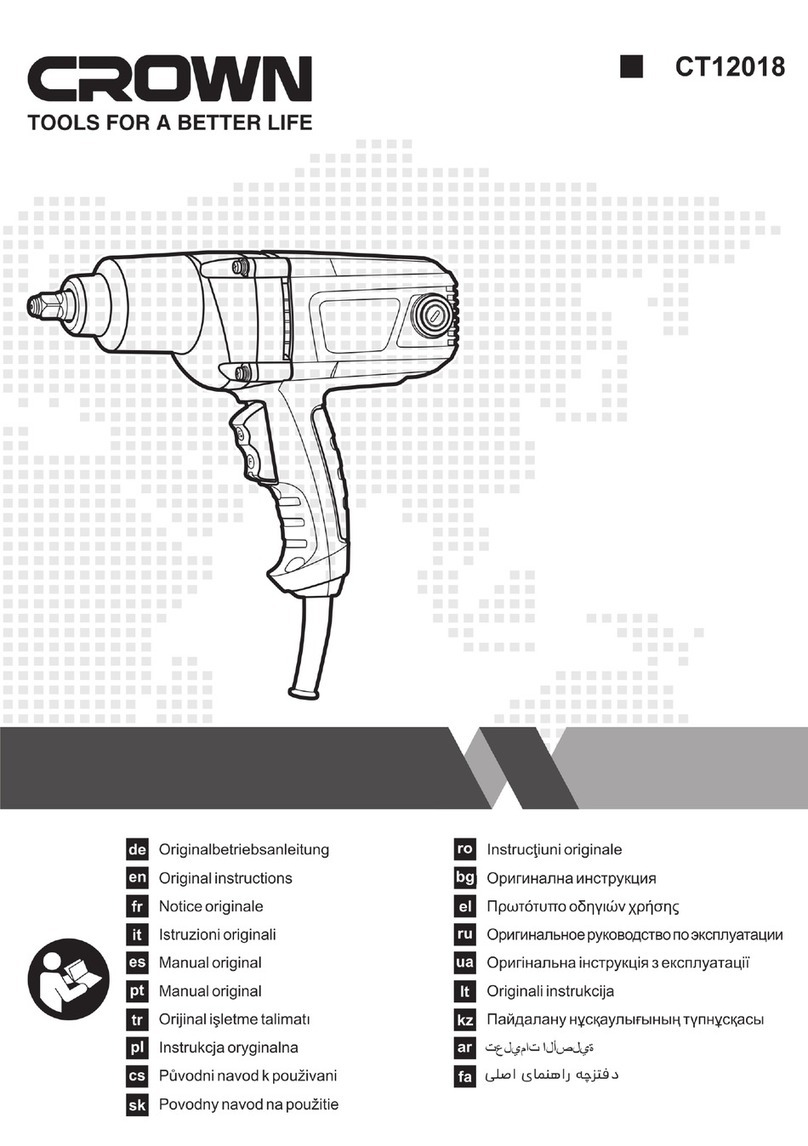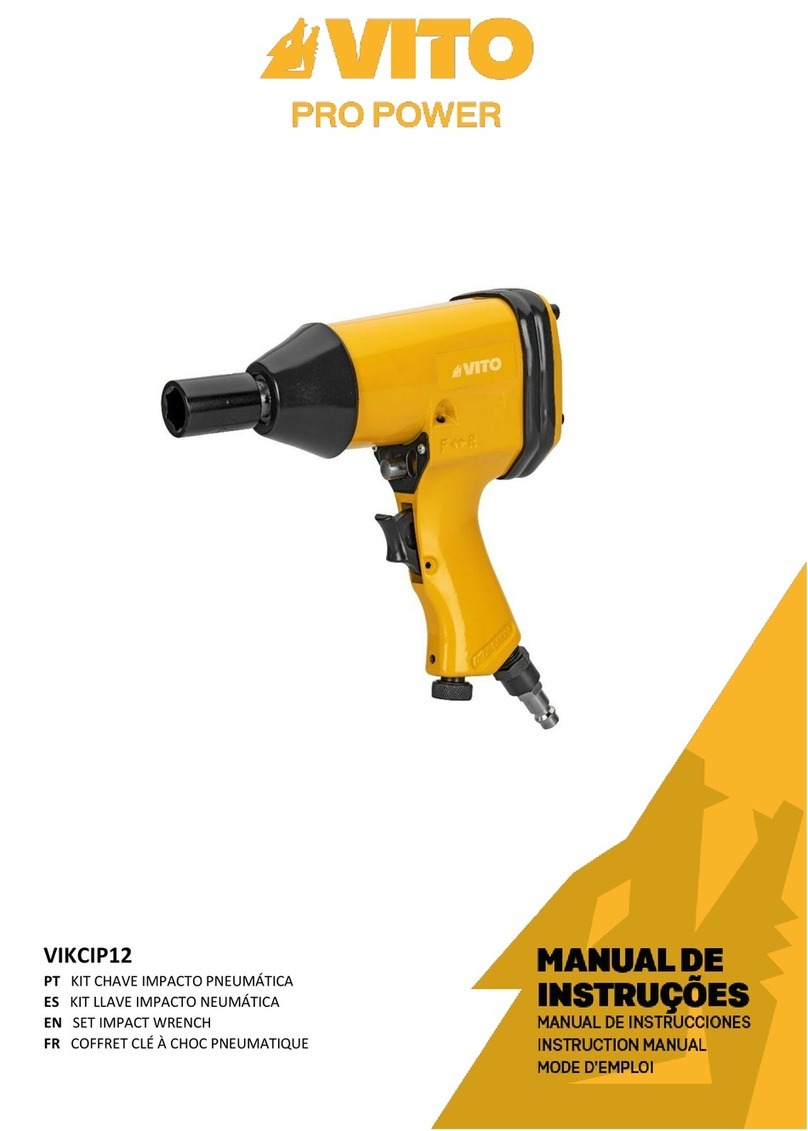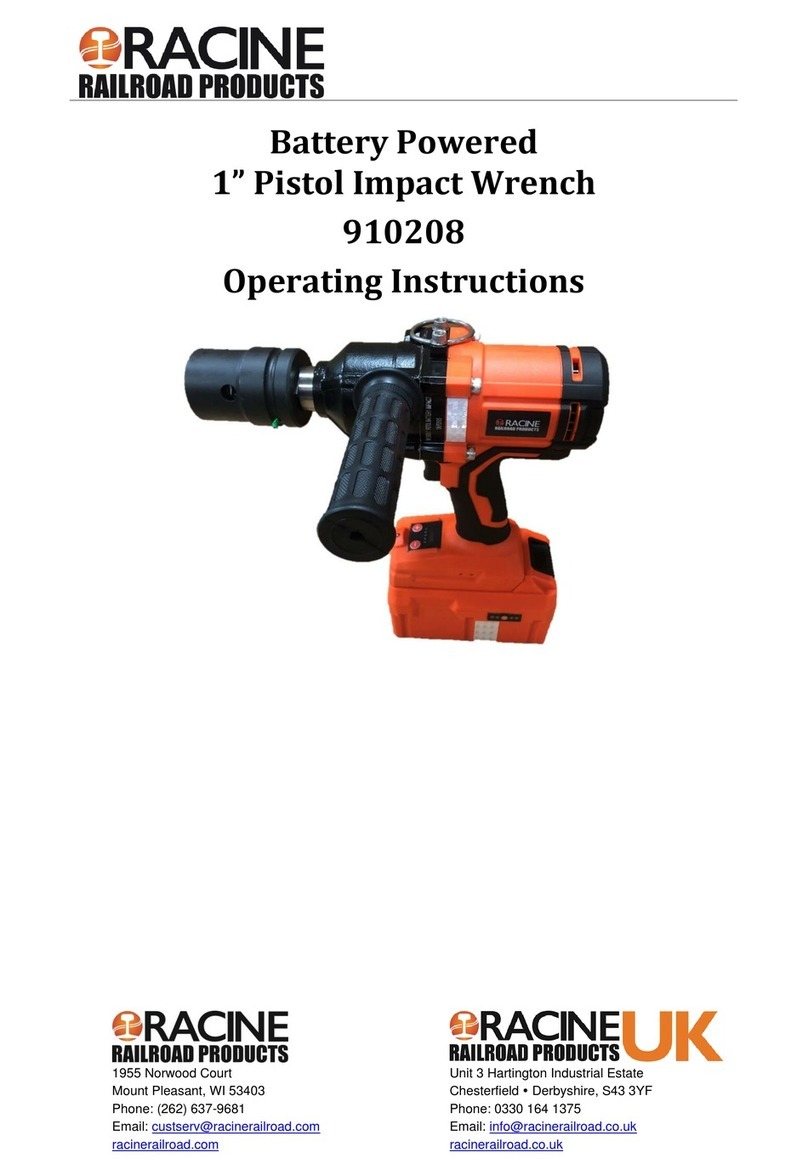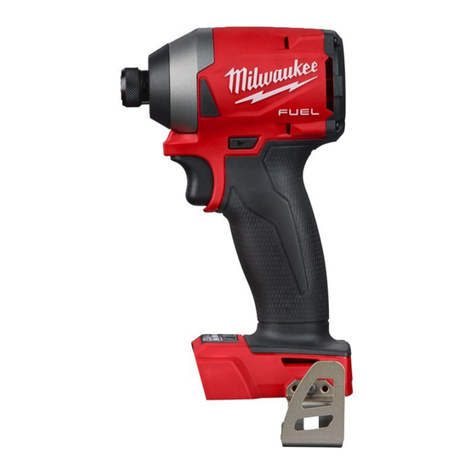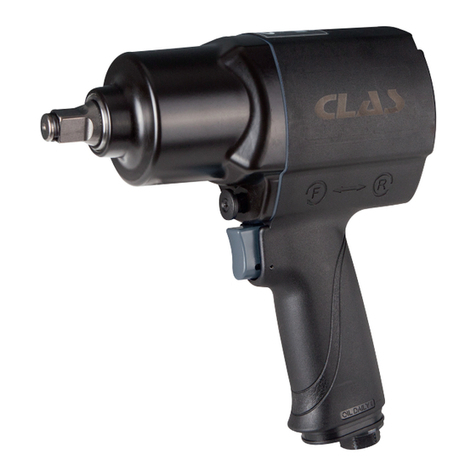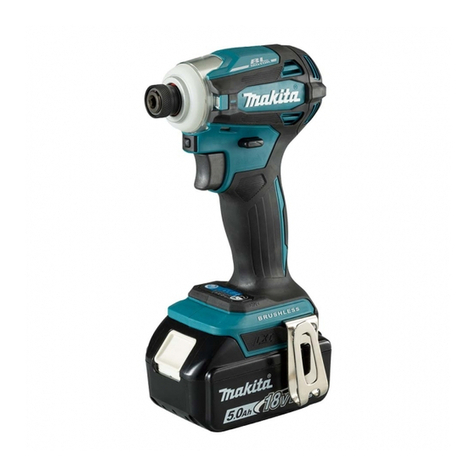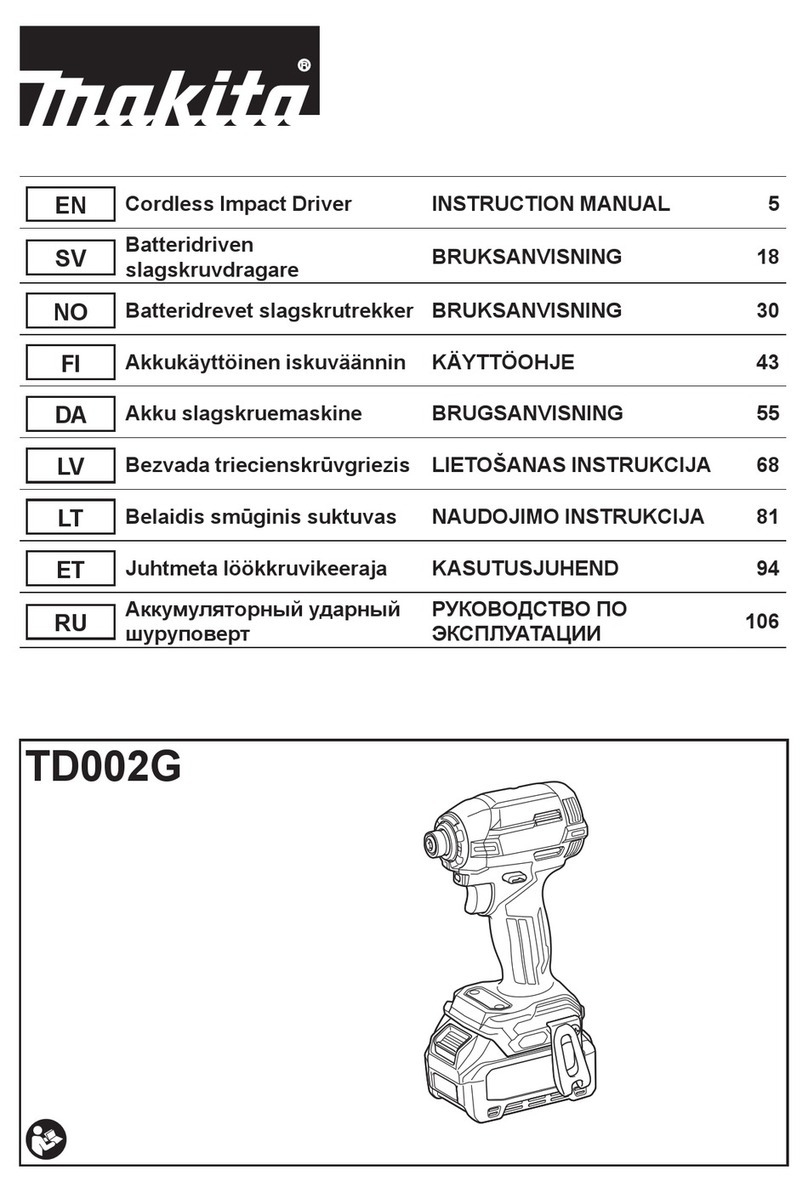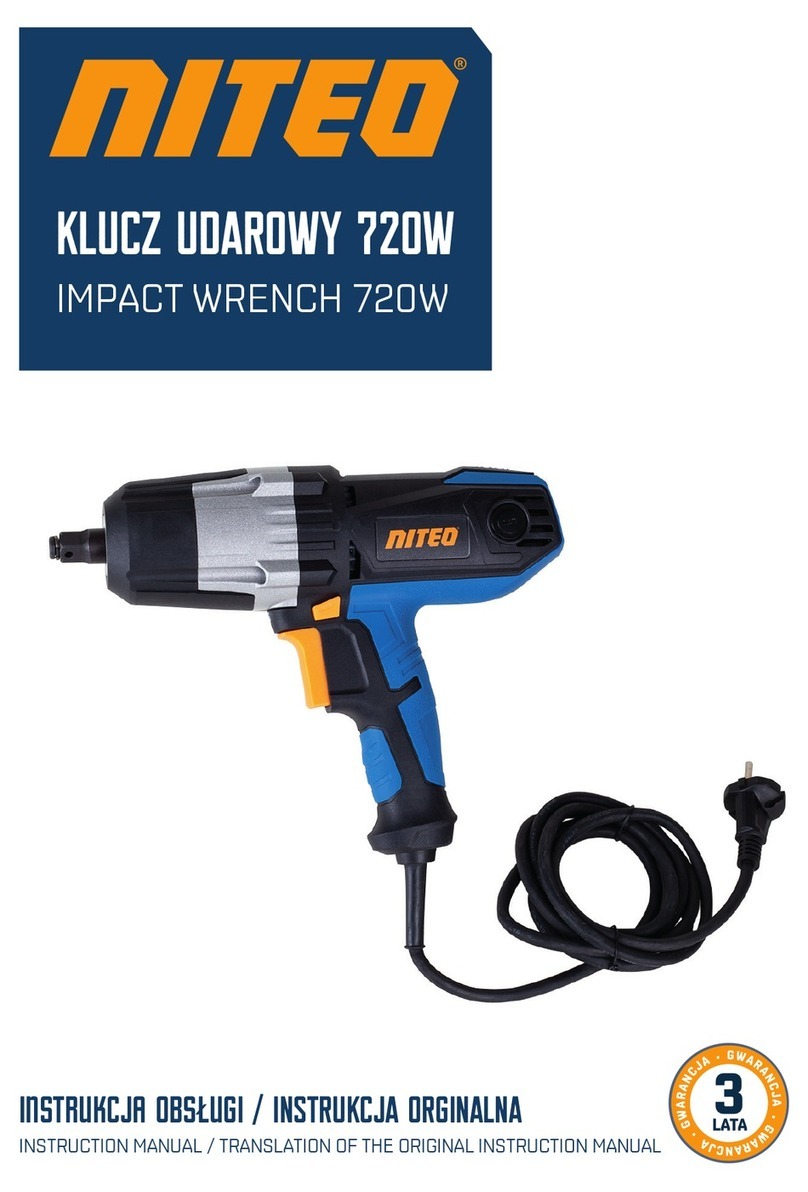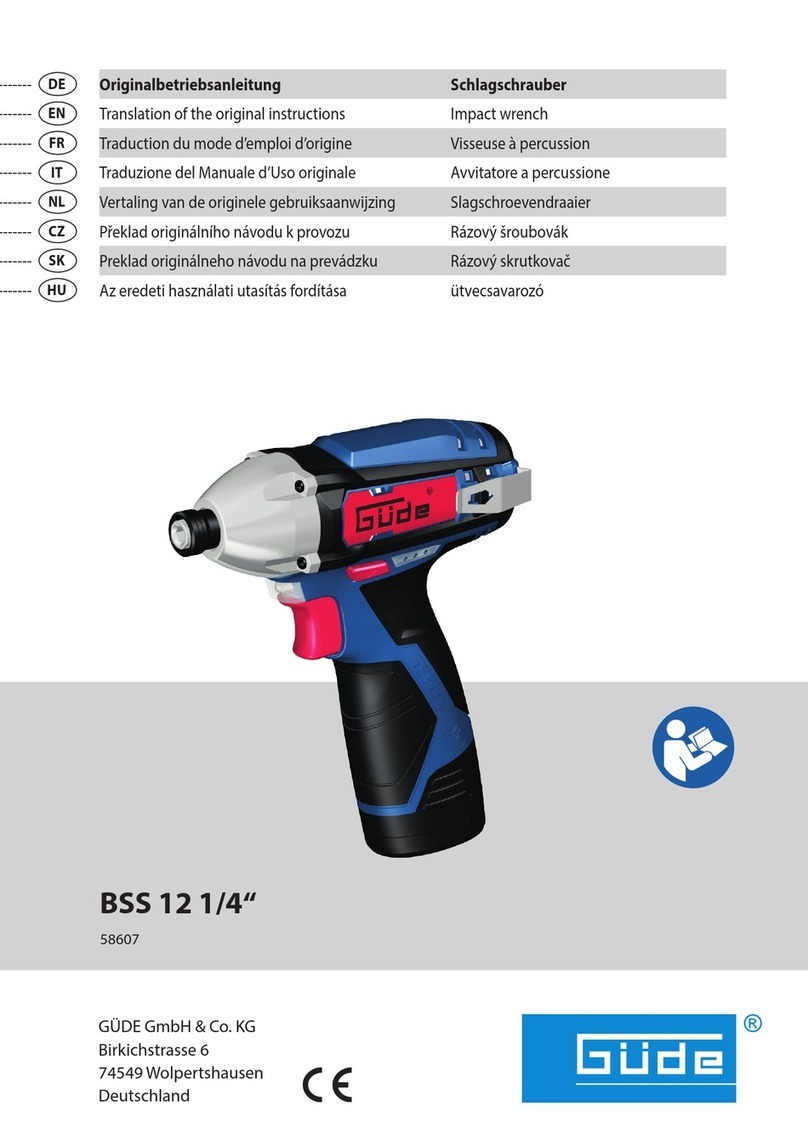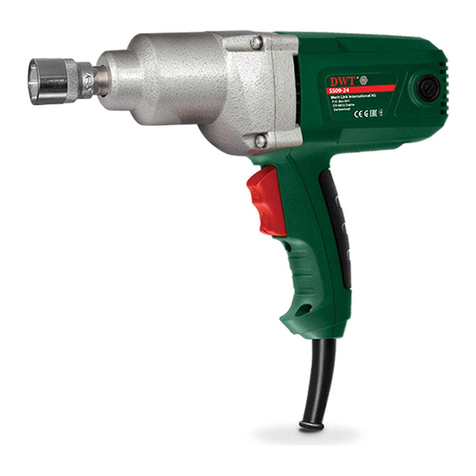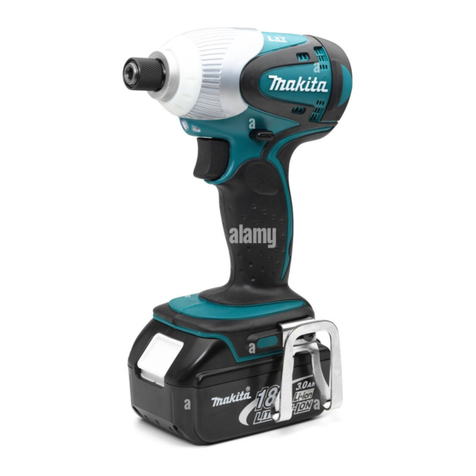siegen power S01002 User manual

Thank you for purchasing a Sealey Product. Manufactured to a high standard this product will, if used according to these instructions
and properly maintained, give you years of trouble free performance.
IMPORTANT: PLEASE READ THESE INSTRUCTIONS CAREFULLY. NOTE THE SAFE OPERATIONAL REQUIREMENTS,
WARNINGS AND CAUTIONS. USE THIS PRODUCT CORRECTLY AND WITH CARE FOR THE PURPOSE FOR WHICH
IT IS INTENDED. FAILURE TO DO SO MAY CAUSE DAMAGE OR PERSONAL INJURY AND WILL INVALIDATE THE
WARRANTY. PLEASE KEEP INSTRUCTIONS SAFE FOR FUTURE USE.
1. SAFETY INSTRUCTIONS
Follow all workshop safety rules, regulations, and conditions when using wrench.
WARNING!Disconnect from air supply before changing accessories or servicing.
Maintain the wrench in good condition and replace any damaged or worn parts. Use
genuine parts only. Non-authorised parts may be dangerous and will invalidate the warranty.
WARNING! Check correct air pressure is maintained and not exceeded. We recommend 90psi.
Keep air hose away from heat, oil and sharp edges. Check air hose for wear before each
use and ensure that all connections are secure.
Only use impact sockets which are specifically designed for use with an impact wrench.
Wear approved safety eye/face shield, ear defenders, and hand protection.
WARNING! Due to the possible presence of asbestos dust from brake linings, when working
around vehicle brake systems we recommend you wear suitable respiratory protection.
Maintain correct balance and footing. Ensure the floor is not slippery and wear non-slip shoes.
Keep children and non essential persons away from the working area.
DO NOT use the wrench for a task it is not designed to perform.
WARNING! DO NOT use wrench if damaged or thought to be faulty (Contact Service Agent).
DO NOT use wrench unless you have been instructed in its use by a qualified person.
DO NOT carry the wrench by the air hose, or yank the hose from the air supply.
DO NOT operate wrench if you are tired, under the influence of alcohol, drugs or intoxicating
medication.
DO NOT carry wrench with your hand on the power trigger in order to avoid unintentional
starting.
DO NOT direct air from the air hose at yourself or others.
When not in use disconnect from air supply and store in a safe, dry, childproof location.
2. INTRODUCTION & SPECIFICATIONS
Drive: ........................... ½” Sq
WorkingTorque: ............220lb/ft/299Nm
Maximum Torque: ...........260lb.ft/345Nm
Ultimate Torque: ............390lb/ft/530Nm
Free Speed: ....................7000rpm
Air Consumption: ................... 5cfm
Operating Pressure: ...........90psi
Air Inlet Size: ..............¼” BSP
Noise Power: .............106dB(A)
Noise Pressure: ........... 95 dB(A)
Load Vibration(k=1.5m/s²) .... 9.2m/s² ...
Weight (wrench only):..........2.2kg
© Jack Sealey Limited S01002 Issue: 1 - 15/03/13
Original Language Version
Fitted with rocking-dog hammer and hardened impact anvil. Features four-position adjustable
air/torque control and reversible action. Suitable for the DIY enthusiast and light garage use.
Model No:......S01002
INSTRUCTION MANUAL
AIR IMPACT WRENCH
½” SQ DRIVE
MODEL NO.
S01002

3.1. Air Supply
3.1.1. Ensure wrench air valve (or trigger) is in the "off" position before connecting to the air supply.
3.1.2. You will require an air pressure of 90psi, and an air flow according to specification.
3.1.3. WARNING! Ensure that the air supply is clean and does not exceed 90 psi whilst
operating the wrench. Too high an air pressure and unclean air will shorten the product life
due to excessive wear, and may be dangerous causing damage and/or personal injury.
3.1.4. Drain the air tank daily. Water in the air line will damage the wrench.
3.1.5. Clean air inlet filter weekly. Recommended hook-up procedure is shown in fig.1.
3.1.6. Line pressure should be increased to compensate for unusually long air hoses (over 8
metres). The minimum hose diameter should be 1/4” I.D. and fittings must have the same
inside dimensions.
3.1.7. Keep hose away from heat, oil and sharp edges. Check hose for wear, and make certain
that all connections are secure.
3.2. Couplings.
Vibration may cause failure if a quick change coupling is connected directly to the wrench. To
overcome this, connect a leader hose to the wrench. A quick change coupling may then be used
to connect the leader hose to the air line recoil hose (see figs.1 & 2).
3. PREPARING WRENCH FOR USE
4. OPERATING INSTRUCTIONS
WARNING! Ensure you read, understand and apply safety instructions before use.
4.1. Only use impact sockets which are specifically designed for use with an impact wrench.
4.2. Connect the wrench to the air hose as in section 3.
4.3. Place the socket over the subject nut and depress the trigger to operate the wrench.
4.4. To change direction push the button at the top of the handle. Direction of “R” for reverse and
“F” for forward
4.5. The flow of air may be regulated by adjusting the flow valve at the base of the handle.
DO NOT use any additional force upon the wrench in order to remove a nut.
DO NOT allow wrench to free run for an extended period of time, as this will shorten its life.
fig.1 fig.2
5. MAINTENANCE
S01002 Issue: 1 - 15/03/13
Original Language Version
© Jack Sealey Limited
WARNING!Disconnect the wrench from the air supply before changing accessories,
servicing or performing any maintenance.Replace or repair damaged parts. Use genuine
parts only. Non-authorised parts may be dangerous and will invalidate the warranty.
5.1. Lubricate the air wrench daily with a few drops of Sealey air tool oil dripped into the air inlet.
5.2. Check and top up the gearbox by removing grub screw located under the impact head.
5.3. Clean the wrench after use.

NOTE: It is our policy to continually improve products and as such we reserve the right to alter data, specifications and component parts without prior notice.
IMPORTANT: No liability is accepted for incorrect use of this product.
WARRANTY: Guarantee is 6 months from purchase date, proof of which will be required for any claim. INFORMATION: For a copy of our latest
catalogue and promotions call us on 01284 757525 and leave your full name and address, including postcode.
5.4. DO NOT use worn or damaged sockets.
5.5. Loss of power or erratic action may be due to the following:
a) Excessive drain on the air line. Moisture or restriction in the air pipe. Incorrect size or
type of hose connectors. To remedy check the air supply and follow instructions in
chapter 3.
b) Grit or gum deposits in the wrench may also reduce performance. If your model has an
air strainer (located in the area of the air inlet), remove the strainer and clean it. Flush
the wrench out with gum solvent oil or an equal mixture of SAE No 10 oil and paraffin.
Allow to dry before use.
5.6. For a full service, contact your local Sealey service agent.
5.7. When not in use, disconnect from the air supply, clean wrench and store it in a safe, dry,
childproof location.
01284 757500
01284 703534
sales@sealey.co.uk
Sole UK Distributor, Sealey Group,
Kempson Way, Suffolk Business Park,
Bury St. Edmunds, Suffolk,
IP32 7AR
www.sealey.co.uk
Web
email
Original Language Version S01002 Issue: 1 - 15/03/13
© Jack Sealey Limited
Environmental Protection.
Recycle unwanted materials instead of disposing of them as waste. All tools, accessories and
packaging should be sorted, taken to a recycle centre and disposed of in a manner which is
compatible with the environment.

WARNING! – Risk of Hand Arm Vibration Injury.
This tool may cause Hand Arm Vibration Syndrome if its use is not adequately managed.
This tool is subject to the vibration testing section of the Machinery Directive 2006/42/EC.
This tool is to be operated in accordance with these instructions.
This tool has been tested in accordance with: EN ISO 28927-2:2009 & BS EN ISO 15744:2008.
Declaration and verification of Vibration Emission figures are in accordance with EN 12096:1997
Measured vibration emission value (a): X m/s²
Uncertainty value(k): X m/s²
Please note that the application of the tool to a sole specialist task may produce a different average vibration
emission. We recommend that a specific evaluation of the vibration emission is conducted prior to commencing
with a specialist task.
A health and safety assessment by the user (or employer) will need to be carried out to determine the suitable
duration of use for each tool.
NB: Stated Vibration Emission values are type-test values and are intended to be typical.
Whilst in use, the actual value will vary considerably from and depend on many factors.
Such factors include; the operator, the task and the inserted tool or consumable.
NB: ensure that the length of leader hoses is sufficient to allow unrestricted use, as this also helps to reduce
vibration.
The state of maintenance of the tool itself is also an important factor, a poorly maintained tool will also increase
the risk of Hand Arm Vibration Syndrome.
CORRECT USE.
Vibration emission is closely linked to the operating pressure in the air supply. The user should ensure that the
pressure is set in accordance with our recommendations to assure optimum efficiency and minimise vibration
exposure.
• Keep hands away from sockets when in use.
• Do not use ill-tting or worn Sockets and Extensions as this will increase vibration.
• Ensure that the tool is correctly aligned to the work. Misalignment increases the risk of vibration injury.
• Ensure that consumables are selected, maintained and replaced in accordance with Sealey Instructions.
• Sleeve fittings must be used where possible.
• Always support the tool in a stand or on a balancer or a tension device where possible.
• Ensure that the operator is sufficiently experienced in order to be able to handle and operate the tool correctly.
• Ensure that the tool is held with a light but secure grip. Avoid excessive grip force as this will increase the risk
of vibration injury.
MAINTENANCE.
If the air system does not have an oiler, lubricate the air tool daily with a few drops of Sealey air tool oil dripped
into the air inlet. Clean the tool after use.
Loss of power or erratic action may be due to the following:
Excessive drain on the air line. Moisture or restriction in the air pipe. Incorrect size or type of hose connectors.
To remedy, check the air supply and follow instructions in the PREPARING FOR USE section..
Grit, residual deposits (gum) in the tool may also reduce performance.
Remove the strainer. Clean the strainer and flush the tool out with gum solvent oil or an equal mixture of SAE
No:10 oil and paraffin. Allow the tool and strainer to dry then lubricate before use.
For a full service, contact your local Sealey service agent.
When not in use, disconnect the tool from the air supply, clean the tool and store the tool in a safe, childproof,
location.
To reduce friction and increase the power and longevity of the tool; regularly lubricate the drive shaft and check
and top up the gearbox (if fitted).
Health surveillance.
We recommend a programme of health surveillance to detect early symptoms of vibration injury so that
management procedures can be modified accordingly.
Personal protective equipment.
We are not aware of any personal protective equipment (PPE) that provides protection against vibration injury that
may result from the uncontrolled use of this tool. We recommend a sufficient supply of clothing (including gloves)
to enable the operator to remain warm and dry and maintain good blood circulation in fingers etc. Please note that
the most effective protection is prevention, please refer to the Correct Use and Maintenance section in these
instructions. Guidance relating to the management of hand arm vibration can be found on the HSC website www.
hse.gov.uk - Hand-Arm Vibration at Work.
Table of contents
Other siegen power Impact Driver manuals
Popular Impact Driver manuals by other brands

K Tool International
K Tool International KTI-81798A owner's manual
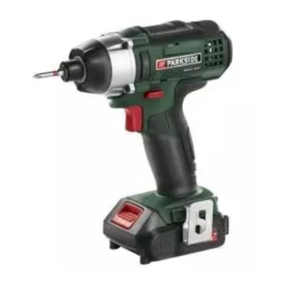
Parkside
Parkside PDSSA 18 A1 Original instructions
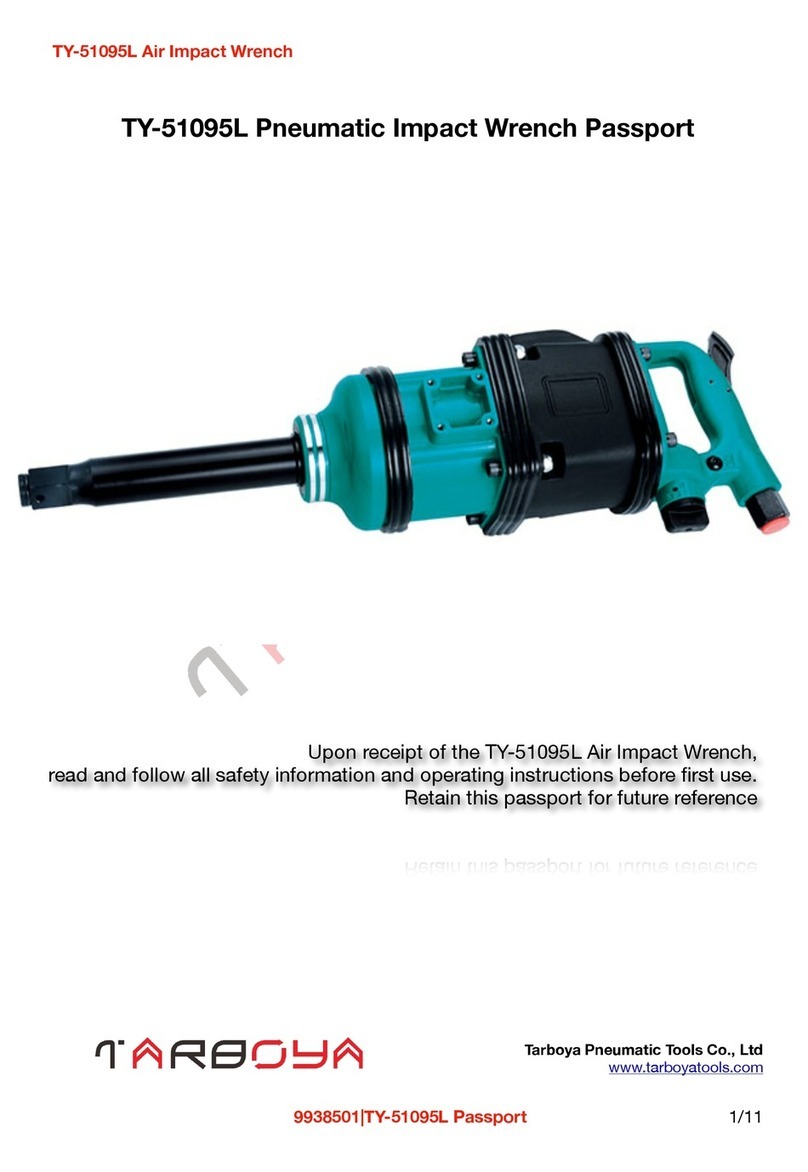
Tarboya
Tarboya TY-51095L operating instructions

Matco Tools
Matco Tools MCL1638HIK2G operating instructions
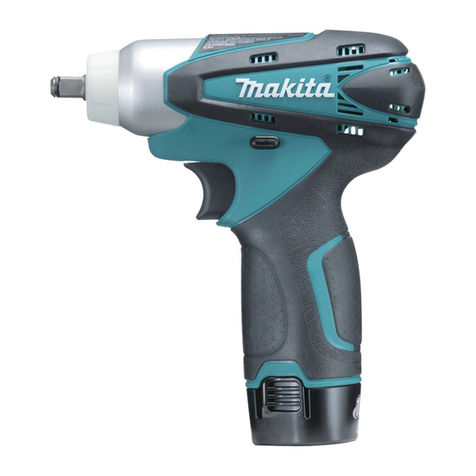
Makita
Makita TW100D Series technical information
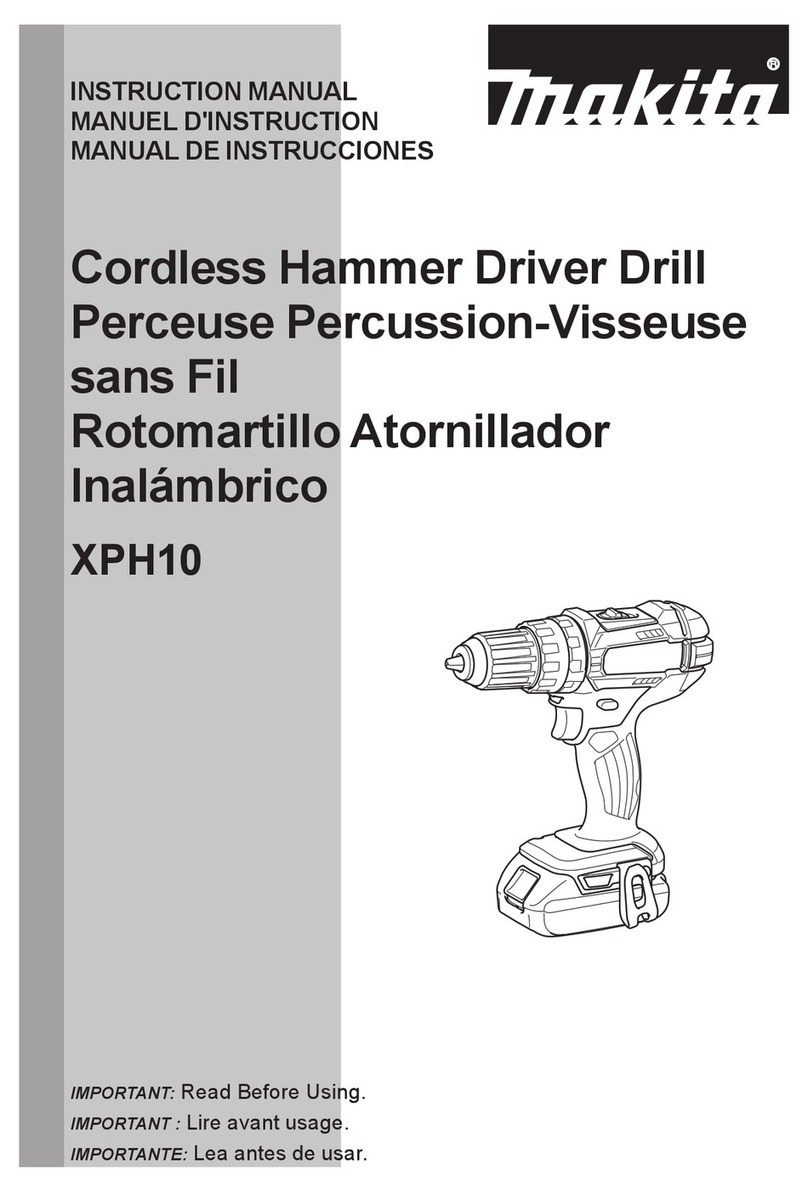
Makita
Makita XT706 instruction manual


